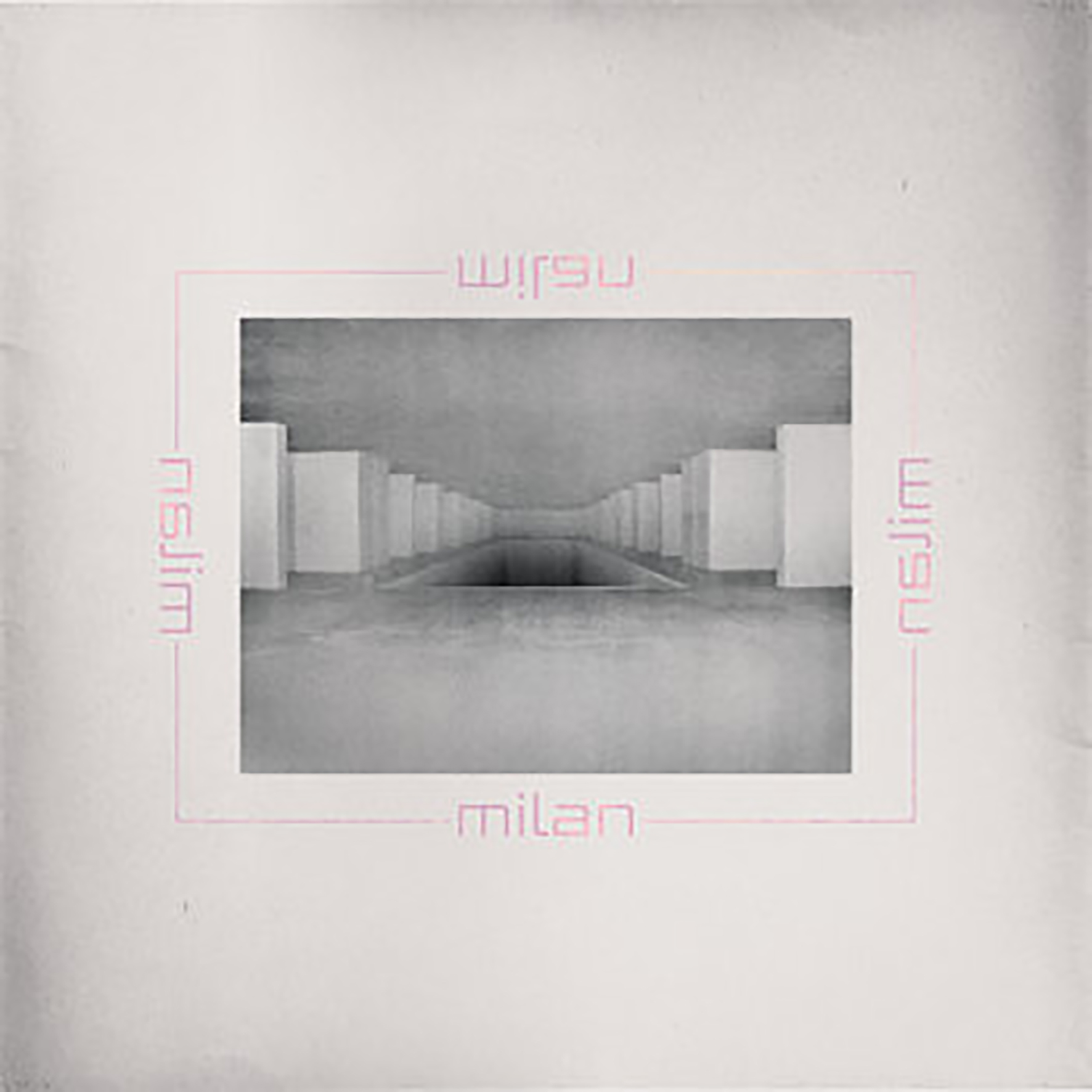
PLEASE DELETE. BELATEDLY DISCOVERED THAT DANGERBIRD IS AN RIAA LABEL.
 
Two new shows just for you. We have squeezed out two extended release episodes for this weekend to get you through this week. They contain mostly new songs but there's also new issues from the vaults. The first show features music from Rider/Horse, Mint Field, Robert Aiki Aubrey Lowe, Anastasia Coope, ISAN, Stone Music, La Securite, Bark Psychosis, Jon Rose, Master Wilburn Burchette, Umberto, Wand, Tim Koh, Sun An, and Memory Drawings. The second episode has music by Laibach, Melt-Banana, Chuck Johnson, X, K. Yoshimatsu, Dorothy Carter, Pavel Milyakov, Violence Gratuite, Mark Templeton, Dummy, Endon, body / negative, Midwife, Alberto Boccardi, Divine. Cow in Maui from Veronika in Vienna. Get involved: subscribe, review, rate, share with your friends, send images! |

PLEASE DELETE. BELATEDLY DISCOVERED THAT DANGERBIRD IS AN RIAA LABEL.
 
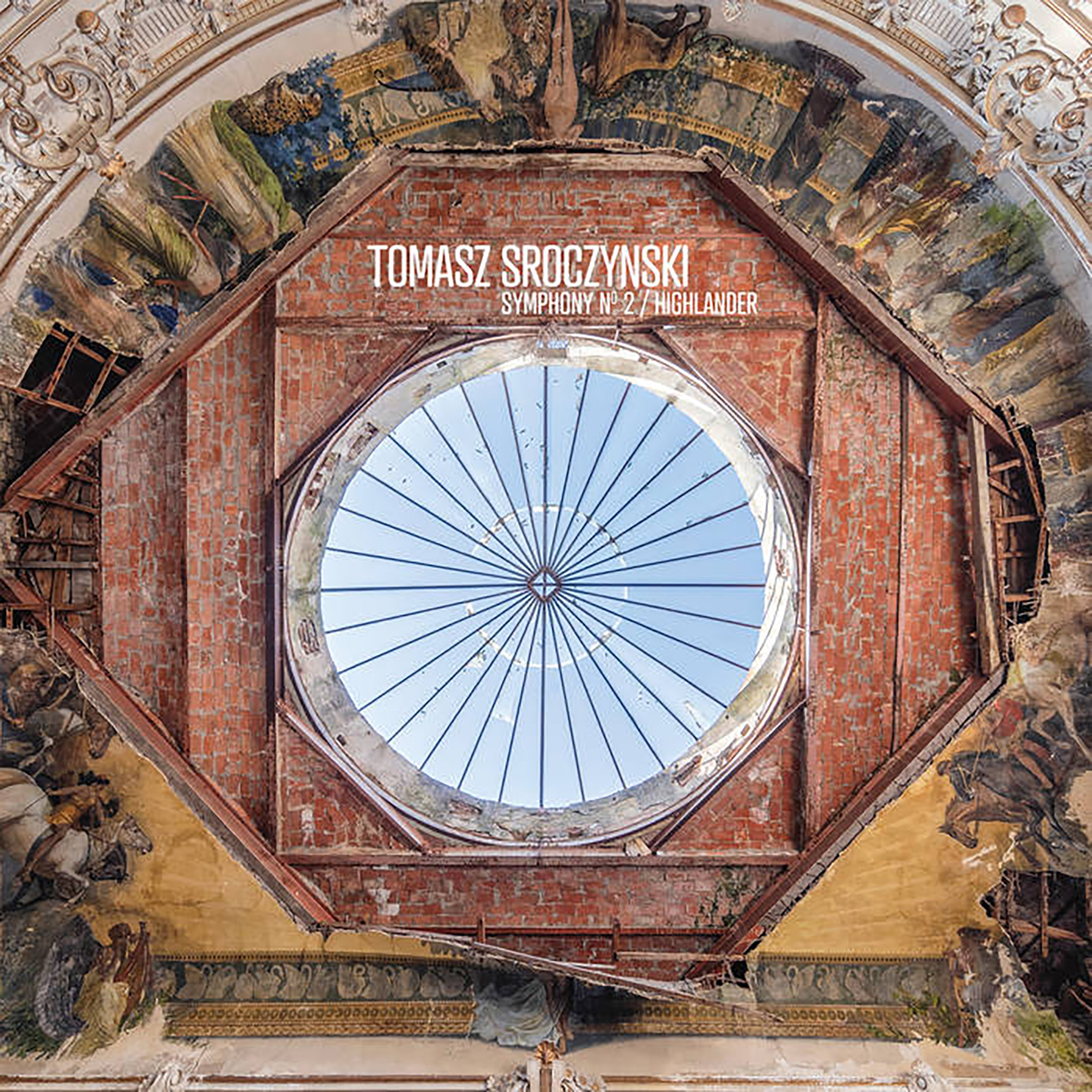 This album was my first exposure to this Polish composer, but this appears to be his sixth album if I include his improv trio and his collaborations. Also, it is the second symphony that he has composed (the first being 2017's Resurrection). Some of his past albums are a bit closer to my own weird/experimental sensibility (Primal and Ajulella, for example), but Symphony n°2 / Highlander is a more straightforward modern classical release and it is one hell of a great one. Or perhaps it would be more accurate to say that Highlander is composed of three very good pieces and one absolutely brilliant one. Naturally, that one absolutely brilliant piece ("Moderato Pastorale") is the best reason to seek this album out, but as the album description notes, "Tomasz Sroczynski is a symphony in his own right." Hyperbole aside, Sroczynski is indeed a genuinely fascinating composer, seamlessly combining influences as disparate as Arvo Pärt, experimental improv, and strains of both classic Detroit techno and contemporary German minimalist techno.
This album was my first exposure to this Polish composer, but this appears to be his sixth album if I include his improv trio and his collaborations. Also, it is the second symphony that he has composed (the first being 2017's Resurrection). Some of his past albums are a bit closer to my own weird/experimental sensibility (Primal and Ajulella, for example), but Symphony n°2 / Highlander is a more straightforward modern classical release and it is one hell of a great one. Or perhaps it would be more accurate to say that Highlander is composed of three very good pieces and one absolutely brilliant one. Naturally, that one absolutely brilliant piece ("Moderato Pastorale") is the best reason to seek this album out, but as the album description notes, "Tomasz Sroczynski is a symphony in his own right." Hyperbole aside, Sroczynski is indeed a genuinely fascinating composer, seamlessly combining influences as disparate as Arvo Pärt, experimental improv, and strains of both classic Detroit techno and contemporary German minimalist techno.
A sane and honest critical assessment of Sroczynski's second symphony could be easily distilled to some variation of "just go listen to 'Moderato Pastorale' immediately." As tempting as that is, it is a bit lean on the details and I would be remiss if I did not mention that Sroczynski's primary tools for this album were just a violin, a sampler, and a harmonizer and that Highlander is a triumph of masterful loop architecture rather than the work of a world-class string ensemble. I was surprised to learn that, as it is hard to imagine the churning, propulsive intensity of "Moderato Pastorale" originating from anything less than a dozen violinists relentlessly bowing away with demonic intensity. Regardless of how it was made, "Moderato Pastorale" is pitch-perfect in every sense, as Sroczynski unleashes a god-tier motif and then nimbly manipulates the tension for ten glorious minutes. I suspect this is where Sroczynski's love of techno manifests itself: he handles dynamic tension the same way a virtuosic DJ might seamlessly assemble and deconstruct a monster groove. Sadly, Sroczynski does not attempt to replicate that deft combination of raw emotion and steadily intensifying trancelike repetition again, but that is mostly because each of these four pieces explores a different shade of moody, epic grandeur. The following "Adagio," for example, gradually transforms from darkly brooding cloudlike swells into a rapturously swooning and heaving crescendo of Romanticism. Elsewhere, "Diablak" combines a chunky rhythm of strummed violin with a mournful, ambiguously exotic melody, but soon takes some strange detours before landing somewhere best described as "wrong-speed psychotic ballroom dance nightmare." The closing title piece then returns to more billowing and cloudlike territory, but does so in a compelling way, as its deceptively amorphous structure is like a living, organic entity that can solidify whenever the need for an emotional crescendo appears. The four pieces add up to an absorbing and dramatic whole, as Sroczynski is very skilled at moving between heaving immensity and emotionally raw snatches of melody. That said, you should probably just go listen to "Moderato Pastorale" immediately.
Samples can be found here.
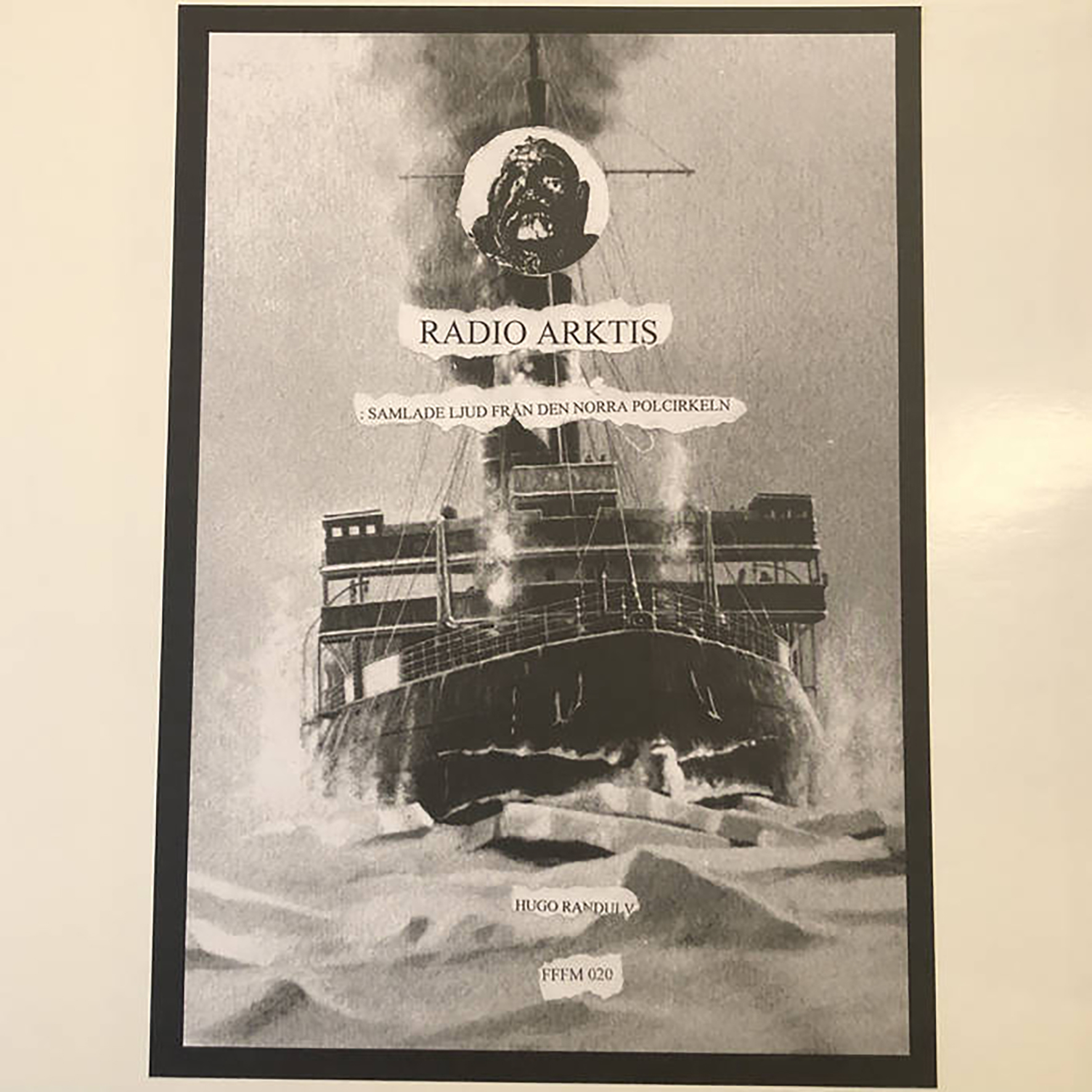 Bandcamp recently published a feature on one of my favorite subjects (the Gothenburg Underground) and it turned me onto this solo release from an artist they dubbed "the closest you'll get to a traditional musician in the Enhet För Fri Musik circle." That is no doubt accurate, as Randulv has been the guitarist in a couple of popular Swedish indie rock bands (Westkust and Makthaverskan) that bear zero resemblance to the outsider folk of Enhet För Fri Musik, but I am sure literally everyone in that collective has extracurricular interests that would surprise me (they are quite an interesting bunch, after all). In any case, the more ambient Radio Arktis is another outlier of sorts, though it is one still creatively indebted to the Gotherberg free music milieu. Randulv notes that the album was inspired by "a dream that one of us had, that we were going to make an imaginary soundtrack to every place on Earth." While the album's title ("Collected Sounds From The Arctic Circle") offers an explicit clue about the first place he chose to soundtrack, Randulv consciously opted for a more "beautiful and bright" aesthetic than I would normally associate with arctic-inspired ambiance. At its best, Radio Arktis carves out a beautiful and distinctive ambient/drone niche that gives Randulv's field recordings and more experimental tendencies fertile soil in which to subtly blossom.
Bandcamp recently published a feature on one of my favorite subjects (the Gothenburg Underground) and it turned me onto this solo release from an artist they dubbed "the closest you'll get to a traditional musician in the Enhet För Fri Musik circle." That is no doubt accurate, as Randulv has been the guitarist in a couple of popular Swedish indie rock bands (Westkust and Makthaverskan) that bear zero resemblance to the outsider folk of Enhet För Fri Musik, but I am sure literally everyone in that collective has extracurricular interests that would surprise me (they are quite an interesting bunch, after all). In any case, the more ambient Radio Arktis is another outlier of sorts, though it is one still creatively indebted to the Gotherberg free music milieu. Randulv notes that the album was inspired by "a dream that one of us had, that we were going to make an imaginary soundtrack to every place on Earth." While the album's title ("Collected Sounds From The Arctic Circle") offers an explicit clue about the first place he chose to soundtrack, Randulv consciously opted for a more "beautiful and bright" aesthetic than I would normally associate with arctic-inspired ambiance. At its best, Radio Arktis carves out a beautiful and distinctive ambient/drone niche that gives Randulv's field recordings and more experimental tendencies fertile soil in which to subtly blossom.
The album's three numbered pieces kick off in impressively strong fashion, as "1" is the piece that feels most like the heart of Radio Arktis. Fittingly, it is twice as long as the other two pieces and Randulv uses that extended duration to pass through several different stages. Initially, "1" is built upon little more than a slow-motion bass buzz, crashing waves, and plenty of tape hiss. That eventually blossoms into a reverie of blurred and shimmering synth-like melodies, but the terrain gets increasingly imaginative and inspired from that point onward, as it soon sounds like a Swedish lumberjack, a fireworks display, a extremely vocal flock of geese, and a melancholy young poet have turned up (as well as a probable cow). Those "non-musical" touches elevate the piece into something quite beautiful, as Randulv has a knack for artfully fading into the background to make something like a cacophony of squawking birds feel like the emotional core and focus. That "bird interlude" is the highlight of the album for me, as it feels like I am on a remote Nordic beach where the sun has just unexpectedly broken through a bank of clouds (exciting plenty of birds in the process). The second piece ("2") is a bit more melodic, as an oscillating shimmer slowly blooms into a dreamy, soft-focus loop of carousel/music box-like melody. It is wonderfully warm and sublime enough to be the album’s other major highlight, yet it too undergoes an interesting transformation. It evokes the feeling of being inside an enchanted snowglobe, then having the spell broken to reveal just battered old piano and a fitful wind-up music box in a sad, empty room. No such magic trick occurs in the final piece, lamentably, but "3" makes for a pleasantly radiant coda nonetheless. Sort of, at least: it feels like a New Age album was dubbed over a noise tape, but the latter remains simmering below the surface, threatening to break through. The noise never breaks though enough to make "3" as memorable as its predecessors, but such a cool climax likely would have ruined the spell of the album, so I must concede that Randulv’s artistic judgment is sound. In any case, I like this album a lot and excitedly look forward to Randulv's imaginary soundtracks for the rest of the globe.
Samples can be found here.
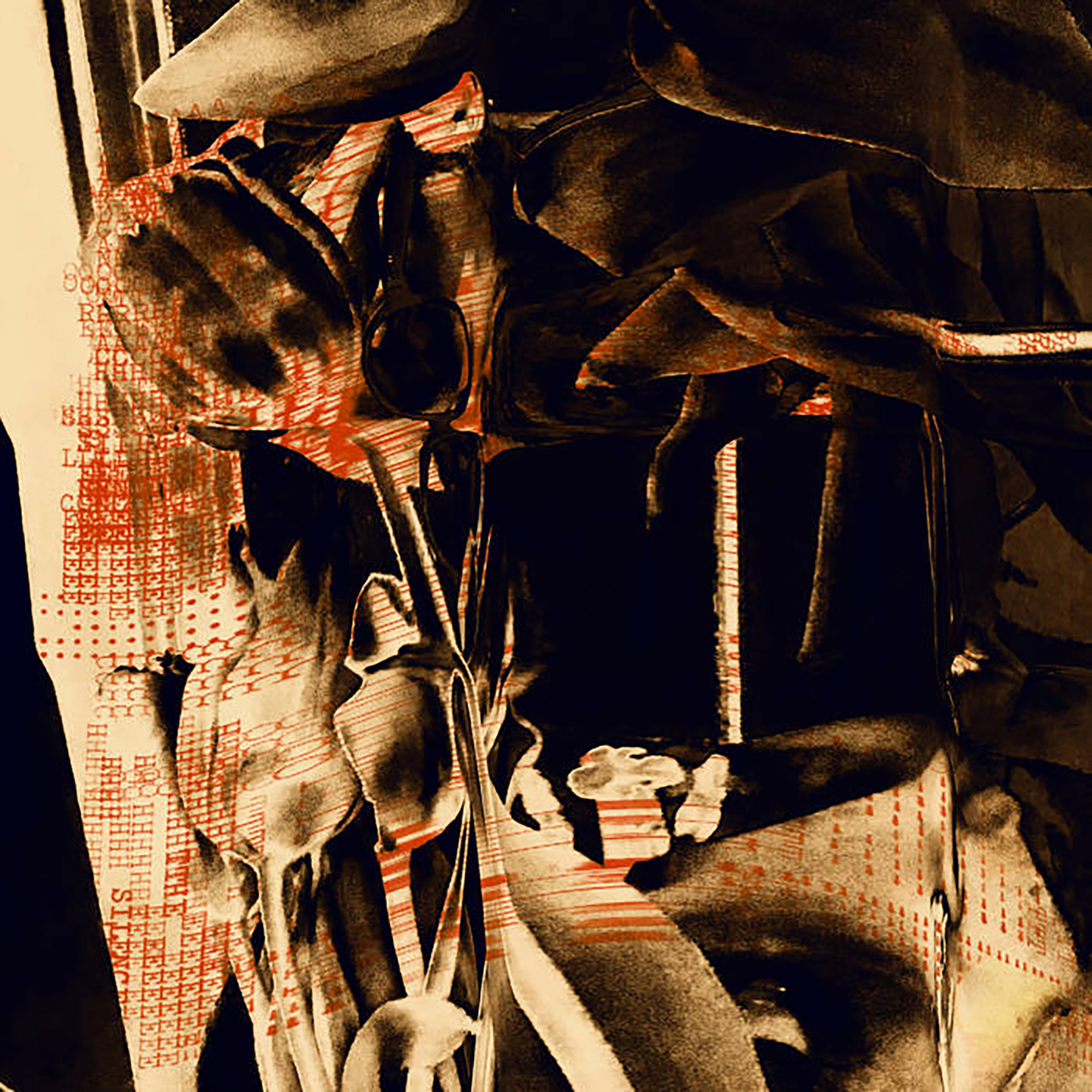 I believe this is the third album from this Vienna-based duo, but it has been a while (eight years) since they last released anything and they are entirely new to me. Rdeča Raketa is a collaboration between composer/double bassist Matija Schellander and Slovenian singer/artist/force of nature Maja Osojnik and they achieve quite a memorable and compelling collision of aesthetics. At its best, ...and cannot reach the silence feels like a Weimar-era cabaret, a killer noise/industrial show, and gripping performance art all beautifully mashed together. While that seems like an aesthetic that should not work (like Marlene Dietrich fronting Throbbing Gristle), the execution is so masterful that Schellander and Osojnik make that unholy union seem perfectly natural. Admittedly, the train occasionally derails a little bit or a song might take an exasperatingly long time to catch fire, but the album's minor flaws feel completely irrelevant when everything locks in place and Osojnik starts seductively singing and ranting like a classic femme fatale diva gone feral. Given that, Osojnik's magnetic vocal presence is understandably the focal point of the album, but it is also worth noting that the pair are unusually good at crafting wonderfully heavy and gnarled industrial rhythms. This is easily one of the year's most memorable albums.
I believe this is the third album from this Vienna-based duo, but it has been a while (eight years) since they last released anything and they are entirely new to me. Rdeča Raketa is a collaboration between composer/double bassist Matija Schellander and Slovenian singer/artist/force of nature Maja Osojnik and they achieve quite a memorable and compelling collision of aesthetics. At its best, ...and cannot reach the silence feels like a Weimar-era cabaret, a killer noise/industrial show, and gripping performance art all beautifully mashed together. While that seems like an aesthetic that should not work (like Marlene Dietrich fronting Throbbing Gristle), the execution is so masterful that Schellander and Osojnik make that unholy union seem perfectly natural. Admittedly, the train occasionally derails a little bit or a song might take an exasperatingly long time to catch fire, but the album's minor flaws feel completely irrelevant when everything locks in place and Osojnik starts seductively singing and ranting like a classic femme fatale diva gone feral. Given that, Osojnik's magnetic vocal presence is understandably the focal point of the album, but it is also worth noting that the pair are unusually good at crafting wonderfully heavy and gnarled industrial rhythms. This is easily one of the year's most memorable albums.
The album is composed of three lengthy pieces whose titles form a poem of sorts ("the night is spilling across the room…like gasoline. waiting it out."). All of the texts come from Osojnik, and the poem abstractly alludes to the album's central theme of rampant misunderstanding and the "tightening of incompatible parallel 'realities.'" I would be hard pressed to come up with a theme that better sums up the current state of the world than "incompatible parallel realities," but it would take a close reading of the lyrics to grasp that overarching theme, as ​.​.​.and cannot reach the silence primarily feels darkly libidinal with a healthy side helping of churning industrial menace. The strongest pieces are the first two, as they are more song-like than the closing soundscape. On "the night is spilling across the room," a ghostly haze of feedback gradually coheres into something like a Birchville Cat Motel gig unsuccessfully attempting to drown out a sultry cabaret chanteuse. As it unfolds, it hits quite a striking balance of eerie beauty, gnarled industrial maelstrom, and smoldering sexuality. It even stays great after Osojnik's fiery central performance subsides, as floating vocals swirl above a heavy industrial beat that feels like one of Downward Spiral-era NIN's more experimental moments. The following "like gasoline" picks up right where its predecessor left off, as a heaving mechanized rhythm is strafed by static and ghostly backing vocals fade in to set the stage for another volcanic Osojnik performance. There are a few moments that feel a bit too intense or bluntly sexual for my taste, but they are handily eclipsed by how much everything else is crushingly brilliant. It's like a great industrial noise band was unexpectedly blessed with a strikingly charismatic, sensual, and spontaneous femme fatale vocalist hellbent on tearing through the scene like an erotic hurricane. Consequently, it is fitting then that the final piece (“waiting it out”) is mostly a howling storm of noise and electronics. It is an impressively nightmarish one too, but the comparative lack of Osojnik's vocals makes it feel less "human" and distinctive than the previous pieces (though I do like the part where her garbled voice fleetingly appears to ask "who are these people?"). The three pieces cumulatively add up to quite a wild, wonderful, and uniquely heavy album, as Schellander and Osojnik seem blissfully immune to any impulses that might dilute or diminish the primal intensity of their art.
Samples can be found here.
 This prolific ambient project from Italian guitarist M. Beckmann has been a fascination of mine for a couple of years now and I have been patiently waiting for an appropriately excellent major new release to cover. This double album from June fits the bill quite nicely, though Beckmann has since released a trilogy of pieces entitled "Late Summer, Interior" that are similarly lovely. According to Beckmann, these four lengthy pieces are "a very condensed display" of how he is coping with the "pressure, stress, and fear around the corner" as "cities burst with life and everybody is eager to live a life that resembles normality." Stylistically, that coping manifests itself as a gorgeous strain of "rural ambient" akin to Benoit Pioulard's more bleary and blurred ambient work (Beckmann cites Boards of Canada as a big influence), but with some wonderful enhancements from field recordings and processed guitars. I am tempted to call it "shoegaze-damaged," but Beckmann generally achieves his sublime, flickering beauty without ever stomping a distortion pedal. I also dearly wish there was a more appropriate term for music in this vein than "ambient," as Beckmann’s strongest work brings a poetry and intimacy to the form that is every bit as transcendent as masters like Andrew Chalk.
This prolific ambient project from Italian guitarist M. Beckmann has been a fascination of mine for a couple of years now and I have been patiently waiting for an appropriately excellent major new release to cover. This double album from June fits the bill quite nicely, though Beckmann has since released a trilogy of pieces entitled "Late Summer, Interior" that are similarly lovely. According to Beckmann, these four lengthy pieces are "a very condensed display" of how he is coping with the "pressure, stress, and fear around the corner" as "cities burst with life and everybody is eager to live a life that resembles normality." Stylistically, that coping manifests itself as a gorgeous strain of "rural ambient" akin to Benoit Pioulard's more bleary and blurred ambient work (Beckmann cites Boards of Canada as a big influence), but with some wonderful enhancements from field recordings and processed guitars. I am tempted to call it "shoegaze-damaged," but Beckmann generally achieves his sublime, flickering beauty without ever stomping a distortion pedal. I also dearly wish there was a more appropriate term for music in this vein than "ambient," as Beckmann’s strongest work brings a poetry and intimacy to the form that is every bit as transcendent as masters like Andrew Chalk.
The opening "Far From The Crowds And The Pressures Of Time" is the first and best of Pastorage Sights' two half-hour-long epics. It begins somewhat modestly, as a hollowly echoing guitar motif languorously repeats over a hazy, shimmering bed of drones. As it unfolds, additional layers of melodies, textures, and effects sneakily accumulate until the piece becomes an achingly beautiful swirl of twinkling, swaying, and quivering interconnected loops. And from then on, it only continues to transform further, albeit without losing any of that essential character, as Beckmann subtly manipulates the focus with incredible patience and lightness of touch. Once it reaches critical mass, "Far From The Crowds" is an absolutely sublime tour de force of warmly flickering and hiss-soaked ambient drone bliss. In fact, one of my notes was "awesome in roughly five different ways by the time it ends." That makes it a tough act to follow, yet two of the remaining three pieces manage to scale similar heights, and the third is far from disappointing. The following "Leidenfrost Effect" features a similar slow-burning trajectory of steady loop accumulation, initially evoking flickering comets streaking across a lonely night sky before slowly expanding into a widescreen panorama of twinkling shoegaze bliss. It took me a bit longer to fully appreciate the 32-minute "Sparing Of Words And Stern In Her Ways," but that is simply because its pleasure are more nuanced. At one point, it feels like time slows and reality blurs while the hissing sounds of rain drift in from an open window, while another passage calls to mind a painterly sky of slow-moving bruised purple and pink clouds. And there is the final five or six minutes, which feel like angelic choral voices enveloped in subtly psychedelic guitar shimmer. The closing title piece is arguably the weakest of the four, but I might just feel that way because it lacks the shifting, enigmatic arc that makes the other three pieces such a pleasure. Instead, it is built around little more than a frayed and bittersweet slow-motion melody and a haze of ghostly EBow shimmer. As such, it shares some common ground with Celer (a cool loop hypnotically repeating into infinity), but that dreamy reverie is slowly eclipsed by a vibrant host of birds in its final moments. The sole caveat with this album is that it requires more patience than some other TVSF releases, as even the shortest piece hovers around 20 minutes, but the reward is usually proportional to how long Beckmann spends laying the groundwork. While I have no idea if Pastorage Sights is one of the strongest The Volume Settings Folder albums to date (there are currently 60+ releases on Bandcamp), it certainly feels enough like one to make it an excellent starting point for the curious.
Samples can be found here.
 I have been quite keen to hear just about everything that this Norwegian saxophonist releases since he damn near stole the show on Caterina Barbieri’s Fantas Variations earlier this year. Thus far, I have yet to be disappointed and this latest solo release beautifully continues Giske's ascendance as one of the most compelling saxophonists on earth. When I first heard Cracks, it reminded me of Pauline Oliveros's hugely influential Deep Listening, as much of it feels like a killer sax solo reverberating around a vast subterranean space leaving dreamlike ghost trails in its wake. As it turns out, that is a masterful illusion, as Giske got to the same place in a very different way (and with very different conceptual inspirations). One of those inspirations was José Esteban Muñoz’s Cruising Utopia, which suggests that "queerness must strive towards futurity." A healthy portion of Cracks' futurity was provided by producer/collaborator André Bratten, as the album was recorded in "the new 'resonant' space of Bratten's reactive studio tuned to his original sounds." The album's description further notes that Cracks brings Giske "one step closer to the man-machine," but the beauty of the album for me lies in how effectively he combines intimate intensity with hypnotically repeating patterns.
I have been quite keen to hear just about everything that this Norwegian saxophonist releases since he damn near stole the show on Caterina Barbieri’s Fantas Variations earlier this year. Thus far, I have yet to be disappointed and this latest solo release beautifully continues Giske's ascendance as one of the most compelling saxophonists on earth. When I first heard Cracks, it reminded me of Pauline Oliveros's hugely influential Deep Listening, as much of it feels like a killer sax solo reverberating around a vast subterranean space leaving dreamlike ghost trails in its wake. As it turns out, that is a masterful illusion, as Giske got to the same place in a very different way (and with very different conceptual inspirations). One of those inspirations was José Esteban Muñoz’s Cruising Utopia, which suggests that "queerness must strive towards futurity." A healthy portion of Cracks' futurity was provided by producer/collaborator André Bratten, as the album was recorded in "the new 'resonant' space of Bratten's reactive studio tuned to his original sounds." The album's description further notes that Cracks brings Giske "one step closer to the man-machine," but the beauty of the album for me lies in how effectively he combines intimate intensity with hypnotically repeating patterns.
The opening "Flutter" is aptly named, as it begins with a breathy, fluttering pattern hovering at the edge of audibility. Gradually, a warbling and tender melody takes shape and the piece blossoms into something wonderfully broken and beautiful. "Flutter" is one of the most simmering and understated pieces on the album, as the central pattern feels like little more than breath and flapping keys, but most of the remaining pieces share a very similar structure. "Cruising" soon solidifies what that structure is: Giske unleashes winding, serpentine arpeggios akin to Phillip Glass-style minimalism, but with a twist: those arpeggios almost always spiral outward into something strangled, howling, or tenderly poignant (and sometimes all within the same piece). Bratten's hand plays a crucial role on "Cruising" as well, as the visceral intensity and gnarled textures that Giske wrests from his sax cut through a hallucinatory fog of long, lingering decays. It is quite an effective balance of sharp and soft textures, as the snarling central melodies stand out in stark relief while a deepening spell of unreality slowly intensifies in the background. The title piece is the sole divergence from that aesthetic, as the ghostly fog takes over completely for a long interlude of murky, billowing ambiance. The strongest piece on the album is "Void," which follows the expected arc of repeating arpeggios splintering into howls of anguish, but represents that arc in its most perfect form. Or maybe I just like the central melody more than usual. In either case, "Void" hits quite an effective balance of animal intensity, poignance, and flickering psychedelia. The closing "Matter (part 3)" is yet another strong variation on the album's "unraveling patterns" aesthetic, but it packs more of a throbbing, seething tension than the rest of the album. While I have not yet fully warmed to the title piece, Cracks is otherwise nothing but wall-to-wall greatness. I love the seemingly raw, intimate simplicity of these pieces, as Giske is an absolute genius at transforming a few arpeggios into something howling, unpredictable, and vibrantly alive.
Samples can be found here.
 Titled after a phrase in Richard Meltzer's writings to do with an eternal sense of perseverance through sound,The Hand As Dealt is dedicated to Terry Riley, Don Cherry, Alice Coltrane, and Egyptian singer Umm Khoultoum (lesser known in the West, but the incomparable and legendary "Orient Star” and “The Fourth Pyramid” in the East). Inspired by the notion that through profound adversity there is a higher reason to play, inherent in the sound itself, Derek Monypeny plays this hand, simply and brilliantly. With his guitar tuned to DADGAD, and an indian instrument called the shahi baaja tuned somewhere in the region of D major, he also, in terms of equipment and technique, pays mind to a path trod by Riley, Reich, Oliveros, Fripp, and Eno.
Titled after a phrase in Richard Meltzer's writings to do with an eternal sense of perseverance through sound,The Hand As Dealt is dedicated to Terry Riley, Don Cherry, Alice Coltrane, and Egyptian singer Umm Khoultoum (lesser known in the West, but the incomparable and legendary "Orient Star” and “The Fourth Pyramid” in the East). Inspired by the notion that through profound adversity there is a higher reason to play, inherent in the sound itself, Derek Monypeny plays this hand, simply and brilliantly. With his guitar tuned to DADGAD, and an indian instrument called the shahi baaja tuned somewhere in the region of D major, he also, in terms of equipment and technique, pays mind to a path trod by Riley, Reich, Oliveros, Fripp, and Eno.
This album has a clear flow, running East to West and back again, at times fierce and frantic, at others, gentle, stretched out, and unhurried. By some standards, most of these pieces are very long, but time is relative and cultural. For instance, it was not unusual for Umm Kulthum to perform three songs over two hours. The music retains a raw magic, even as Monypeny uses a lot of e-bow and a myriad of different effect pedals. For example, a key song "South Van Ness Vickie” is gentle and cosmic: as a loop of a little guitar figure runs throughout the song, and he improvises over that using a Mellotron simulator pedal (the EHX Mel9), a time lag accumulator*, amp reverb, and e-bow. The combination sparkles with a spontaneous, almost-sensuous quality. His use of the shahi baaja is not the superficial embrace of a traditionally Eastern instrument, as attempted by countless groups whipping out a sitar in the name of psychedelia. If anything, on The Hand As Dealt the differences between the (Western) guitar and (Eastern) shahi baaji are more or less erased, bringing them closer together.
 
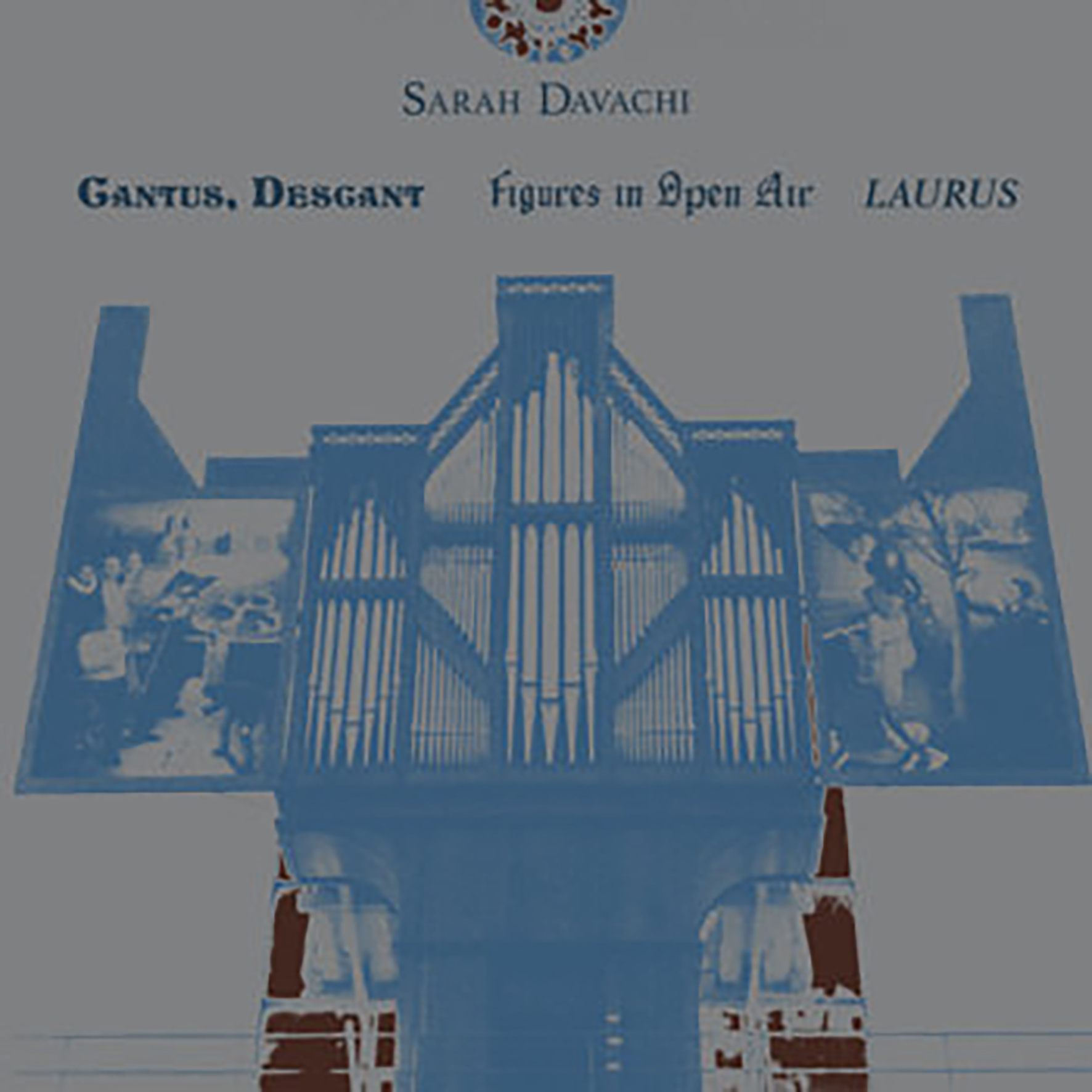 This five-CD boxed set ambitiously compiles all three of Davachi's interrelated 2020 albums released on her own Late Music imprint. Given that Figures in Open Air alone features two pieces that clock in around an hour each, this collection presents an absolutely overwhelming amount of similar-sounding material. That said, Cantus, Descant seems to be one of Davachi's more beloved releases among fans despite its unswerving devotion to pipe organ-centered minimalism. That makes this collection an inspired idea, as it presents that constrained vision in three differing stages: its "more raw and improvisational" beginnings (Laurus), the polished and meticulously crafted studio album, and some great live performances from the period when this era was taking shape. Each of the three albums features some sublime highlights, which will likely inspire me to curate my own condensed version. That distillation will give me the sustained and focused beauty that I want from a Sarah Davachi album, but Cantus Figures Laurus can also provide a calming five-hour respite in a cathedral of drones. It is not unlike a portable version of La Monte Young's Dream House, if he were into church music instead of psychotropic Just Intonation harmonies. Hell, it can even be an interactive one, as listeners can enhance their experience with their own Marian Zazeela-inspired light shows.
This five-CD boxed set ambitiously compiles all three of Davachi's interrelated 2020 albums released on her own Late Music imprint. Given that Figures in Open Air alone features two pieces that clock in around an hour each, this collection presents an absolutely overwhelming amount of similar-sounding material. That said, Cantus, Descant seems to be one of Davachi's more beloved releases among fans despite its unswerving devotion to pipe organ-centered minimalism. That makes this collection an inspired idea, as it presents that constrained vision in three differing stages: its "more raw and improvisational" beginnings (Laurus), the polished and meticulously crafted studio album, and some great live performances from the period when this era was taking shape. Each of the three albums features some sublime highlights, which will likely inspire me to curate my own condensed version. That distillation will give me the sustained and focused beauty that I want from a Sarah Davachi album, but Cantus Figures Laurus can also provide a calming five-hour respite in a cathedral of drones. It is not unlike a portable version of La Monte Young's Dream House, if he were into church music instead of psychotropic Just Intonation harmonies. Hell, it can even be an interactive one, as listeners can enhance their experience with their own Marian Zazeela-inspired light shows.
The heart of this collection is, of course, Cantus, Descant, which was both the inaugural release for Davachi's Late Music imprint and the culmination of her recent fascination with sacred music and antique church organs. Two organs in particular play a central role: a Van Straten pipe organ from 1479 located at Amsterdam's Orgelpark and a Story & Clark reed organ (1890s) situated in LA's wonderful Museum of Jurassic Technology. Several other antique pipe organs turn up as well, but the Van Staten stands out as unique for reasons beyond its advanced age, as it was tuned to a "sixteenth century meantone temperament" and required the presence of a second person (Hans Fidom) to operate the bellows. The Van Straten compositions form a kind of mini album of their own, as that organ was used for the five numbered "Stations" pieces. Stylistically, however, the "Stations" cycle is fairly representative of the album’s overall aesthetic, which has a feel of floating, dreamlike suspension. The liner notes provide plenty of interesting information about the inspirations and conceptual themes of the album, but the central idea of the album lies in the title: Davachi was primarily interested in the interplay between "cantus" (either unadorned singing or the sometimes improvisatory high voice in a polyphony) and "descant" (the larger structure). Davachi expanded that into approaching the album as a dialogue between the individual and "the larger time and space" that they occupy. In more practical terms, that guiding duality manifests itself in a series of slow-motion, droning reveries that gradually and subtly blossom into something more.
 This latest release from my favorite Swedish free music collective is apparently "a concept album on relationships, family values and broken promises." I will have to take their word on that, as I do not understand Swedish, but Ömhet & Skilsmässa ("Tenderness & Divorce") does have a very different (and possibly more wholesome) feel than some previous releases. How truly wholesome an album can be when it features Sewer Elections' Dan Johansson is up for debate, but I do not doubt the collective's commitment to carrying on the grand tradition of freeform Swedish psychedelia a la Pärson Sound, Träd Gräs Och Stenar, and others. That said, Enhet För Fri Musik have their own wonderful thing going and I would be hard pressed to think of any other artists this devoted to guileless simplicity and organic spontaneousness. Admittedly, I was secretly hoping the quintet would revisit the sound collage territory of "Fragment Av En Midsommarnattsdröm" this time around, but my consolation prize is that the Jandek-ian discordant acoustic guitars are kept to a minimum. Instead, this album feels like the impressionistic audio diary of a teenage girl who is growing up in a pleasant rural commune, as it uncannily evokes the wonder and openness of someone totally indifferent to popular trends and not yet hardened by the endless disappointment and inhumanity of the outside world.
This latest release from my favorite Swedish free music collective is apparently "a concept album on relationships, family values and broken promises." I will have to take their word on that, as I do not understand Swedish, but Ömhet & Skilsmässa ("Tenderness & Divorce") does have a very different (and possibly more wholesome) feel than some previous releases. How truly wholesome an album can be when it features Sewer Elections' Dan Johansson is up for debate, but I do not doubt the collective's commitment to carrying on the grand tradition of freeform Swedish psychedelia a la Pärson Sound, Träd Gräs Och Stenar, and others. That said, Enhet För Fri Musik have their own wonderful thing going and I would be hard pressed to think of any other artists this devoted to guileless simplicity and organic spontaneousness. Admittedly, I was secretly hoping the quintet would revisit the sound collage territory of "Fragment Av En Midsommarnattsdröm" this time around, but my consolation prize is that the Jandek-ian discordant acoustic guitars are kept to a minimum. Instead, this album feels like the impressionistic audio diary of a teenage girl who is growing up in a pleasant rural commune, as it uncannily evokes the wonder and openness of someone totally indifferent to popular trends and not yet hardened by the endless disappointment and inhumanity of the outside world.
It took me a bit longer than usual to fall in love with this album, as I was initially exasperated by the extreme brevity of several of the best songs and the fragmented, kaleidoscopic nature of the album. I am probably a fool for coming to an Enhet För Fri Musik album expecting a hot single, but I do like it when a band's best ideas are expanded into complete, fully formed statements. That sort of thing was not on the agenda with this album, but it eventually dawned on me that something considerably more interesting and unique was happening instead. Obviously, "Swedish noise artists reclaim their childlike naivete to transform into an oft-brilliant free-folk ensemble" is an impressive feat too, but I was already expecting that part. Consequently, I was more struck by how this album feels like a VHS tape of enigmatic found footage fragments that capture flickering tender, beautiful, intimate, and uneasy moments spanning many years and many miles. There are a few pieces that feel dark, such as "Opus 6 – Sommarljus" (crunching footsteps in a desolate moonlit shipyard, then a ramshackle, Wicker Man-esque folk procession) and "Kärlekens Nöjen" (woman humming a sad melody by the seaside as storm clouds gather). If the album was entirely in that vein, it would feel like a series of clues to an unsolved murder, but the amiable musicality of Sofie Herner's voice makes the album feel like I am being led through a bittersweet phantasmagoria by a trusted and charming friend. It also helps that there are some genuinely lovely song vignettes strewn throughout the album. My favorite pieces are the ones in which Herner haltingly and casually chatters over a simple pretty melody, such as "Idag Är Det Bra" (featuring an endearingly wobbly-sounding synth melody) and the hesitant, finger-picked folk of "En Bra Dag." The closing piano ballad "Skilsmässa" is another delight in that simple melodic vein, but there is also one excellent sound collage-style piece on the album as well ("Flytten"). In fact, "Flytton" is probably the album’s most surreal and absorbing piece, as it sounds somewhere between an accordion-driven sea shanty and a murky, hallucinatory cabaret. Or maybe like a melancholy noir film about the French Resistance, except the club's femme fatale chanteuse has lost interest in singing and is just conversationally chattering in Swedish as a grinding, supernatural roar slowly envelops everything. I would be thrilled if there were a few more songs like that on Ömhet & Skilsmässa, but I genuinely love the spell that the collective casts on this album. Enhet För Fri Musik are channeling something truly radical: a simpler pre-internet era before regional character, emotional directness, and intimacy were nearly wiped off the map by advances in production technology and all-consuming international trends. And they seem to be confidently climbing farther and farther out on that limb with each new release.
Samples can be found here.
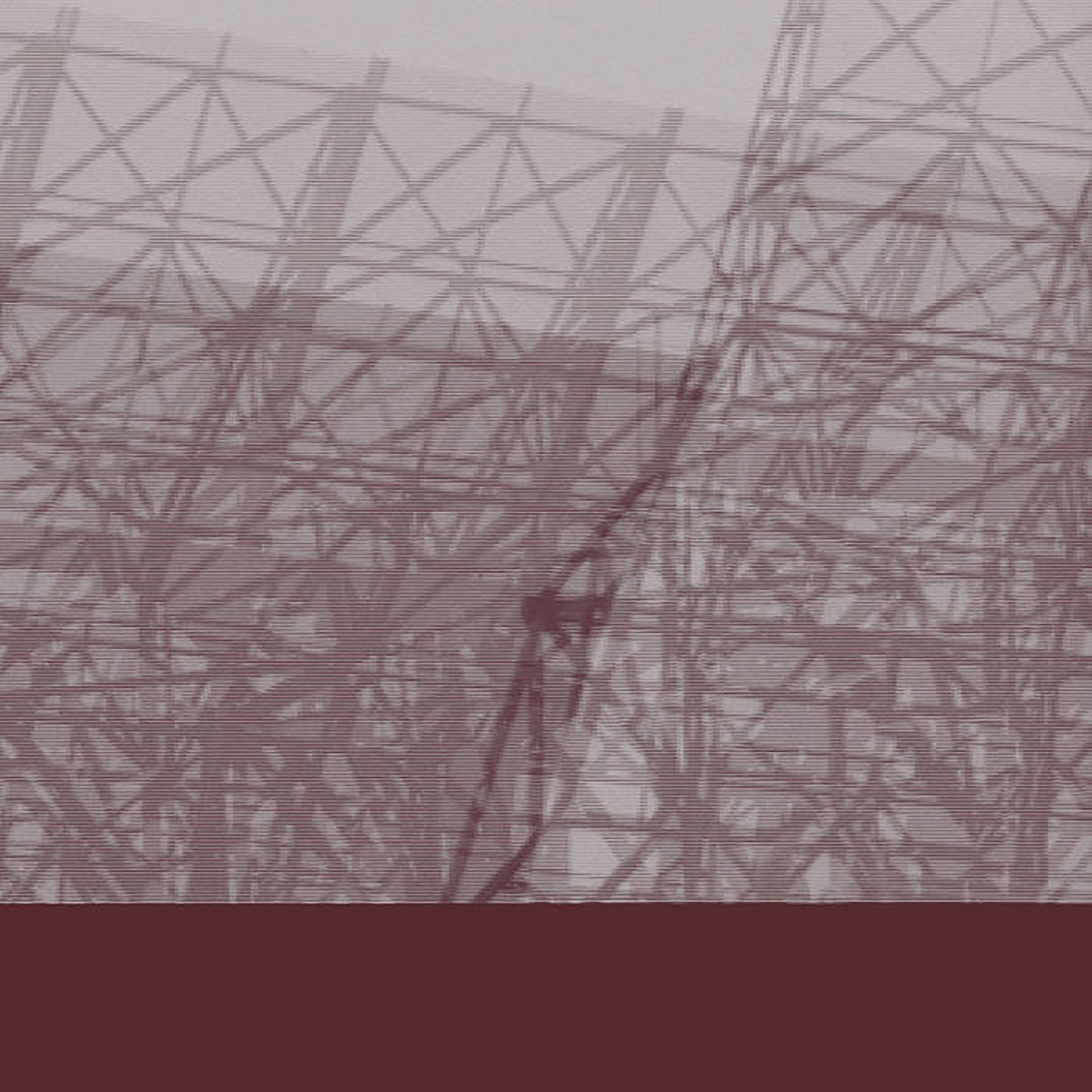 This latest release from Robin Rimbaud is hopefully the first of many deep dives into the Scanner archives, as he ambitiously spent part of his lockdown digitizing and mixing his unreleased work from the '80s. The big story, of course, is that Earthbound Transmissions features some of Rimbaud's early work with appropriated phone conversations that predates Scanner's 1993 eponymous debut. Those scanned calls are only one facet of these recordings, however, as this album documents a formative experimental stage immediately after Rimbaud's acquisition of a "luxuriously expensive" Fostex 280 four-track recorder, which he combined with a Digitech RDS 7.6 Time Machine to make looping, layered sound collages. For the most part, Earthbound Transmission feels like an unusually strong release from the '80s DIY noise cassette scene (albeit more on the "murky ambient" side of the spectrum), but there are also a handful of pieces that legitimately feel like lost Scanner classics.
This latest release from Robin Rimbaud is hopefully the first of many deep dives into the Scanner archives, as he ambitiously spent part of his lockdown digitizing and mixing his unreleased work from the '80s. The big story, of course, is that Earthbound Transmissions features some of Rimbaud's early work with appropriated phone conversations that predates Scanner's 1993 eponymous debut. Those scanned calls are only one facet of these recordings, however, as this album documents a formative experimental stage immediately after Rimbaud's acquisition of a "luxuriously expensive" Fostex 280 four-track recorder, which he combined with a Digitech RDS 7.6 Time Machine to make looping, layered sound collages. For the most part, Earthbound Transmission feels like an unusually strong release from the '80s DIY noise cassette scene (albeit more on the "murky ambient" side of the spectrum), but there are also a handful of pieces that legitimately feel like lost Scanner classics.
The opening "The Canonization" is a solid and representative example of the baseline aesthetic of Earthbound Transmissions, as it unfolds as a roiling and murky sea of grayscale drones. As a composition, it is not particularly memorable, but the actual notes played are secondary to the hissing, clouded, and frayed textures that Rimbaud conjures. That is not quite enough to make it an album highlight, but it is a damn good starting point for some of the other pieces, as one or two imaginative touches can easily transform that foundation into something hauntingly beautiful. Such welcome innovations start to appear with the following "Comus," which uses clattering metal, an obsessive ticking rhythm, and voice fragments to evoke a tense and enigmatic scene from a gloomy Cold War-era train station in Eastern Europe (like a John Le Carré novel, but artier and more hallucinatory). "Split Substance" is better still, as a chopped and garbled male voice combines with pulsing string samples for something resembling a haunted radio broadcast. The next run of hits kicks off with "His Begging Bowl," in which a found recording recounts the poignant final moments of a beloved family dog over a backdrop resembling a smearing music box melody. Weirdly, it sounds like it is about to become a Daft Punk anthem at one point, but instead veers into trance-like, Oval-esque repetition. The two "Drones Places" pieces that follow are mesmerizing as well. The first is a pitch-perfect dose of shuddering industrial menace, while the second features static-drenched voices (some funny, some sad) crackling across a warmly, billowing ambient dreamscape. "Soft Endclose" is another scanned phone call gem, as a chaotic squall of noise and colorfully accented conversations fitfully unfolds over a minimal ambient shimmer. My other favorite pieces are the languorously melancholy and grinding industrial textures of "River Whispering Run" and the wryly amusing plunderphonic groove of "Unhelpful." The remaining pieces are solid too, but there are probably four or five songs that rank among Rimbaud's finest work, which is not something I was expecting to find lurking in dusty thirty-year-old tapes of unreleased music.
Samples can be found here.